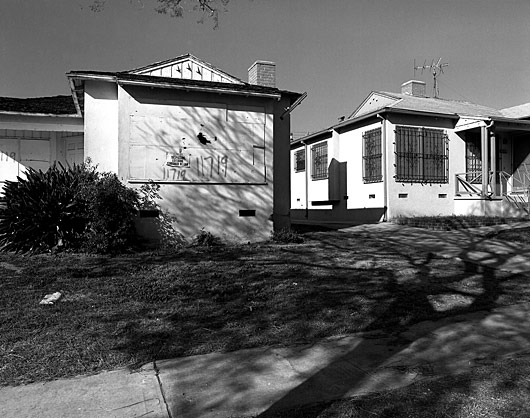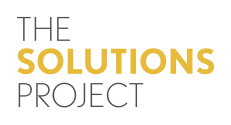Over the last several months, we have witnessed race return explosively to the forefront of American political discourse. Horrible tragedies in cities nationwide including Ferguson, New York City, Cleveland, and Los Angeles – in which officers of the law commit acts of violence against black men – have sparked outrage, protest, and calls to action. However, the death of people of color at the hands of the police is not new; it is part of a history of racism in the US and policies within police departments that by design operate through systemic bias. It was out of the slave patrols and the Jim Crow laws enforcing segregation in the 19th and 20th centuries that the concept of race-based policing was fabricated and institutionalized. Today, police departments such as LAPD or NYPD are notorious for racist tactics and have laundry lists of complaints, controversies, and human rights violations that date back much further than people often remember. A century and a half out of slavery and decades out of government sanctioned segregation, how much has the template for policing changed? Manisha Vaze, SCOPE’s organizing director, talked with Mónica Novoa, communications strategist at Families for Freedom, a community organization in New York that organizes families whose loved ones are facing deportation due to an interaction with law enforcement agencies. Mónica, who grew up in LA and now lives in New York, made time to talk more about the history of police violence in LA and the legacy that former LA Police Chief Bill Bratton has taken to NY.
Who is Bill Bratton?
Bill Bratton is in the tradition of LA Police Chief William Parker, the “Jim Crow Chief of the West” who in the 50s and 60s created a militarized LAPD and even recruited officers from the South to police Black and Mexican people in South Central and East LA. The “broken windows” theory which Bratton adopted from James Wilson and George Kelling and first applied in Boston, New York, LA, and as a consultant in Oakland and other places – is not just any old theory. Bratton is the architect for the implementation of that Jim Crow policing worldview.
How would you describe the “broken windows” theory?
Broken windows, is a theory that plays on racist tropes and has long been debunked by several scholars including sociologist Alex Vitale. It is the idea that a blighted community with “broken windows” signals to people that they can cause more so-called “disorder” and that petty violations like loitering, or littering or jay-walking – must be highly policed or they will lead to violent crimes.
The government’s response to tackling racial inequity and poverty needs to be about job development and ensuring good schools, public health, and mental health services are provided for families and youth. So much of our organizing has been about getting these basic needs met – because the systems failed us and responded by attacking people and further normalizing bias. When Darren Wilson was trying to punk Mike Brown and his friend to get on the sidewalk, that was “broken windows” policing.
How do you remember Bratton’s LA?
In LA, folks will remember how he criminalized and displaced homeless people on skid row to make way for all of the downtown redevelopment. Advocates fought hard, because what homeless people needed were more mental health services and beds. LAPD was out there ticketing people for things like jaywalking, when they couldn’t pay, they were getting locked up. Tom Hayden has also written about the co-optation of civil rights leaders during the Bratton era and LA’s stop and frisk culture and broken windows policing being on par with New York’s. Bratton’s tenure caused damage beyond “broken windows.” I remember the LAPD killing 13-year-old Devin Brown. I remember the repression during 2007 immigrant rights marches. I remember him going after peacemaker Alex Sanchez, who was wrongly indicted due to incompetent LAPD detective work. All charges were eventually dropped but the community of highly effective Black and Brown violence prevention and intervention workers felt a chill – their work was more effective than police work and it was attacked. Bratton’s zero tolerance policies inspired more extreme versions in El Salvador, Guatemala and Honduras. In 2007, Bratton and Mayor Villaraigosa hosted a transnational summit in LA with Central American police. He’s consulted with police in Venezuela, Mexico, all over. What we must continue to question is the media environment that sets up the public to go along with Bratton and his damaging policies.
Let’s unpack that last point: How do you think the media generated an environment that sets up the public to go along with the policies that Bratton implemented?
The film Bastards of the Party is great for understanding the roots of policing, deindustrialization and the drug war in my hometown, it even addresses how crack cocaine as a business was used by the CIA to fund the Contras to try to destabilize the Nicaraguan peoples’ fight for freedom. The ultra conservative academic and media investment of the 80s and 90s brought us Broken Windows theory, the bad guy vs. police TV shows, the bootstraps televangelism, the Willie Horton Ads, the “welfare queen” trope – all anti-black propaganda. These messages pathologized Black communities, especially poor mothers and young people, and cemented in the minds of many people, including people of color, deeply seated implicit bias that equates Black people with criminality and violence. This is how we ended up with Clinton’s 1994 Crime Bill, the 1996 Welfare to Work Act and the 1996 immigration laws that criminalized Black and brown migrants.
Last December, when Mayor De Blasio announced his appointment of Bill Bratton as the police chief of the NYPD, how did the grassroots respond?
Josmar Trujillo, one of the founders of New Yorkers Against Bratton talks about how the group was formed by parents and community members affected by Bratton’s first New York era, who found each other protesting at the press conference where De Blasio announced Bratton’s appointment. Their immediate demands were for De Blasio to end to broken windows and fire Bratton. They stood alone in calling out De Blasio because he is so tied to the organizations that led the Stop and Frisk campaign, so when he appointed Bratton, if you turned to city council and most of those orgs – crickets, silence. And it’s sad because there are some really good people and groups there, but folks with institutional ties, despite their best intentions, are in a political bind because they supported him as a so-called progressive. The reform of Stop and Frisk that he championed as Public Advocate has been a farce – its still happening though not under that name, and what’s worse is the issue of data collection has become shadier. I’m sure lots of his supporters feel let down.
After the announcement that Officer Pantaleo would not be indicted for Eric Garner’s murder, Mayor De Blasio held a press conference and spoke about how he understands our country’s racist history and the pain of parents with black children because he has a black son. But this summer, after Eric Garner’s murder, the Mayor still defended Bratton and broken windows. Despite faking to the left in his speeches, he defends institutionalized racial bias. I just really hope the voices of folks who have been speaking out against Bratton and broken windows for months and years, are lifted up – the mothers and families that have lost children, Parents Against Police Brutality, New Yorkers Against Bratton, young people from the South Bronx, Harlem, Flatbush, Crown Heights and all the most over-policed places in the city.
Where is the hope now?
What gives me hope is young organizers innovating in Ferguson, LA, New York and beyond – and how #BlackLivesMatter has gone worldwide! The women behind it, Opal Tometi, Alicia Garza and Patrisse Marie Cullors-Brignac, champion the dignity of all Black Lives. Under that banner they lift up queer people, women, trans people, people with convictions – and it’s truly grassroots and a shift from patriarchal charismatic leadership! Moving forward is only possible with their contribution. We must respect and care for that call, which is also a major call for allies to do our part in disrupting and challenging anti-black bias. In LA, there’s no lack of inspiration. We are inspired by the work of Cullors-Brignac and Dignity and Power Now and The Coalition to End Sheriff Violence and all their partners their victory to establish a civilian review board for independent oversight on Sheriffs gives us energy in New York. LA holds it down!
LA CAN, SCOPE, and Community Coalition have been building people power, doing community development and challenging local structures and getting great wins. CopWatch, October 22nd Coalition, ANSWR and Youth Justice Coalition and others continue to challenge police brutality from the grassroots. Noreen McClendon at Concerned Citizens of South Central Los Angeles, Susan Burton at a New Way of Life, Alex Sanchez at Homies Unidos, Aquil Basheer founder of the Professional Community Intervention Training Institute, these are all community innovators who have been filling in the gaps in LA and keeping hope alive for so long. I have so much respect and love for their community-based innovations in LA, which in so many forms need to find their way to all cities across the country.













